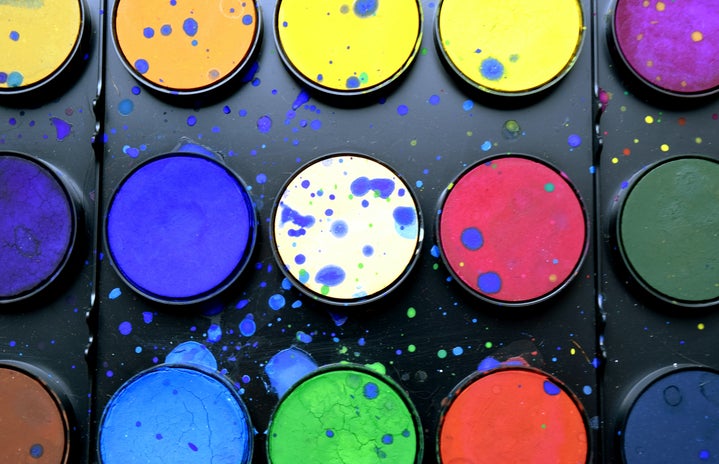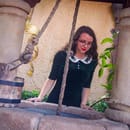It was a hot July afternoon when I was asked an unusual question.
“Can we watch Snow White?”
At first mention, this sounds like a perfectly average question for a child to ask his babysitter. However, given that young boys often have an aversion to anything without action, I was surprised and impressed at a seven-year-old’s interest in a movie that predates him by 75 years. Popcorn popped and movie selected, we reclined comfortably on the couch, his head on my shoulder.
“Miss Allie?” he said, about fifteen minutes into the film.
“Uh huh?”
“How old is Snow White?”
“The character or the movie?”
“Both.”
“Well, Snow White is fourteen, but her movie came out in 1937.”
“Before computers?”
“Yup.”
“How did they make it then?”
I paused the movie, and he sat up to face me. I explained to him that animated movies used to be drawn by hand, and this piqued his interest. Not wanting to deprive the child of a chance to learn something new, I decided to find out and relay as much as I could about how animation used to work, and I stumbled upon a not-often-told history of the very movie that first brought up this question: Snow White and the Seven Dwarfs.
Walt Disney Animation Studios.
Early films started in the late 1870s as unedited simple shots of a person or multiple people performing an action. Around the twentieth century, filmmakers began to plot out scenes using multiple shots, then technology made it possible for film to be accompanied by sound in the 1920s and three strip technicolor in the 1930s. These innovations forever changed film both as an art form and as a source of entertainment.
Additionally, these innovations enabled artists to use new and different mediums to express their creativity. One such artist, Walter Elias Disney, saw this as an opportunity to bring his love of comic strips and cartoons to the big screen, but simply producing animated shorts would not be enough for his vision. This innovative artist, whose name is now known worldwide, and his team pushed the boundaries of what was standard of film by producing the first full length animated feature, Snow White and the Seven Dwarfs, establishing a company that continues to go strong as well as a what remains highly popular genre of film.
Disney got his start in drawing early in life; he was once the cartoonist for his school newspaper in the late 1910s. Following the example of his older brother, Roy, Disney forged his age to join the Red Cross during World War I, where he became known for entertaining his fellow soldiers by drawing cartoons on the side of his ambulance. He did not enjoy the military life, however, so he returned home, where he began working at a commercial art studio. It was there where he met Ub Iwerks and many of his other colleagues that would go on to work with him as he transitioned into animation. Financial failures including an early attempt at starting his own art studio lead him to work at the Kansas City Film Ad Company with Iwerks, which started his fascination with animation, more specifically cel or hand-drawn animation. Disney ended up bouncing from studio to studio because he was insistent that hand-drawn animation was better than the more popular cutout method. It was during this time that he had several failed businesses and produced the innovative Alice comedies, which were some of the first to merge animation and live action, a method he would use again forty years later with Mary Poppins. He relocated with Iwerks and his brother to Hollywood, where they faced the ups and downs of creativity through losing the rights to Disney’s first original character, Oswald the Lucky Rabbit. Disney was not easy to discourage, and he ultimately bounced back by creating both his greatest icon, Mickey Mouse, and the Silly Symphony cartoon series, for which he won his first Academy Award.
Even so, Disney grew dissatisfied with the limitations that others put on animation as an art form. He wanted to do something new, something different. He wanted to create the first full length animated feature film. Referred to as “Disney’s Folly,” the notion was considered too far-fetched to be feasible, and Disney had a hard time finding the funding to make his movie. Disney had faith in his animators and his vision, however, and placed such a strong wager on his success by mortgaging his own house. This film went on to cost three times over its initial budget, but it also became Disney’s strongest success to date: Snow White and the Seven Dwarfs.
Walt Disney, “Snow White,” 1935-1939, Davis Museum at Wellesley College, Wellesley, MA.
Every aspect of making this film was innovative. As hard as it is to believe in the modern age, film was a new and difficult medium, which could only be worsened by the concept of having a film that is hand-drawn from start to finish. Disney had to rely heavily on his staff to do the bulk of the work. In order to make sure that the film was progressing to his liking, he would have his animators lay out each frame in story order, though they were not created in chronological order. This process of laying out the visuals of a story would eventually become known as storyboarding, which is an essential part of modern filmmaking.
Walt Disney, “Demise of the Witch,” 1937.
Additionally, the challenges of depicting a full, rich environment lead to experimentation amongst the Disney staff as to how to deepen each frame, creating the concept of a multiplane camera. The basic idea from a technical approach is that each picture has a transparent layer beneath it, which would allow the background to change. An example of this technique is the scene in which the Evil Queen drinks the potion that turns her into a hag. The hazy, swirling background heightened the terror and anxiety of the scene, stunning audiences with its multidimensionality. This technique can also be seen in the scene depicting the death of the Queen, depicting her hag form in distress in the foreground as well as ominous shadows of the forest, with the cliff setting on a different level. This can be seen in the still above, which features the dynamic compositions that made the film such an artistic triumph.
Walt Disney, “Snow White and the Huntsman in the meadow,” 1937.
Similarly, Disney had a strong notion of what he wanted the film to look like; he wanted it to mimic European art, especially of the 19th century. The above picture shows an early concept of Snow White, which features the yellow hues of Dutch art as well as the lush greens made famous in Rococo. This image could be seen as a love letter to European art for this reason. He required his animators to take night classes to become familiarized with human movement and anatomy as well as the formal concept of space. He was adamant that all artistic elements be taken into consideration and that the frames must look logical. He drew upon inspiration from Italian artists’ studies on perspective, and Disney passed this on to the staff. Such strong artistic considerations can be seen in the image below, and they were instrumental in establishing animation as an art form. Disney made certain that Snow White was to be treated as a proper artwork.
Walt Disney, “Dwarfs eating soup,” 1937.
Ultimately, “Disney’s Folly” paid off; Snow White and the Seven Dwarfs was a critical and commercial hit. Not only did Snow White break box office records, but it also famously won Disney not one but eight honorary Academy Awards in the form of one regular-sized Oscar and seven miniature ones. Disney continued to use and evolve the techniques discovered while creating Snow White, and animation became the backbone of his industry, one which persists to this day. Snow White herself is something of an icon, and she is widely used throughout Disney films, shorts, and even in the Disney theme parks. She remains a symbol of creativity and overcoming doubt by showing that Walt Disney’s art was not in vain.
Snow White and the Seven Dwarfs was not only a triumph of cinema but a victory of art. While it is arguable that the quality of animated films wavers throughout the short history of cinema, the same could be argued for live-action films. Animated films require artists to conjure images from their imaginations, reflecting the world around them the same way that painters, sculptors, and architects do. There are, however, many animated films that live up to the legacy of “Disney’s Folly,” including efforts such as Disney’s Beauty and the Beast and Pixar’s Coco as well as non-Disney ventures such as the recent Spider-Man: Into the Spider-verse. The animated medium of film remains an avenue for both entertainment and artistic expression, allowing animators to create anything for the big screen from silly humor to heartwarming moments to poignant political statements and everything in between. Walt Disney made it possible for artists to draw for the big screen and be taken seriously doing so.



